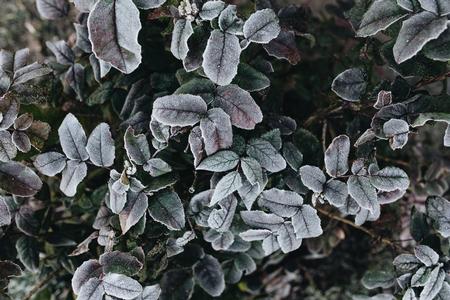How to protect plants from frost
-
When the weather report calls for freezing temperatures overnight, you don’t want to be rushing outside in the dark to cover your cold-sensitive plants. Here are some tips for being prepared.
 Photo: Piqsels
Photo: Piqsels
Why worry?
Frost injures plants by causing ice crystals to form in plant cells. This makes water unavailable to plant tissues and disrupts the movement of fluids. Frost-damaged leaves appear water-soaked, shrivel and turn dark brown or black.
Plants are classified according to the minimum temperatures they normally tolerate. "Hardy" plants tolerate some amount of short-term freezing, while "tender" plants are killed or injured by freezing temperatures. Citrus, avocados, bougainvillea, fuchsias and succulents are among the tender plants. If you are in an area prone to frost or freezing, consult a reference such as the Sunset Western Garden Book to learn the hardiness of various species.Site selection is important
Elevation, surface reflectivity, soil properties, canopy cover and proximity of structures or plants can all affect heat radiation within your landscape. Avoid planting tender species in open, exposed areas or in low spots where cold air settles. Better to put them near a south or west-facing wall, which absorbs heat during the day and radiates it at night. Fences, boulders and shrubs also can serve a protective function for nearby plantings.Defensive measures
- Water the soil thoroughly (except around succulents). Wet soil holds heat better than dry soil, protecting roots and warming air near the soil.
- Bed sheets, drop cloths, blankets and plastic sheets make suitable covers for vulnerable plants. Use stakes to keep material, especially plastic, from touching foliage.
- Remove the coverings when temperatures rise the next day.
- For a short cold period, low plantings can be covered with mulch, such as straw or leaf mold. Remove once the danger of frost has passed.
- Place a 100-watt lamp designed for outdoor use in the interior of a small tree. It can emit enough warmth to reduce frost damage. Holiday lights (not the LED type) serve a similar function, but be sure they don’t touch any covering materials.
- Spray an anti-transpirant, available at your local nursery, on the foliage of cold-sensitive plants to seal in moisture. One application can protect up to three months by coating the leaves with an invisible polymer film.
- Cluster container plants close together and, if possible, in a sheltered spot close to the house.
Succulents need special care
While some succulents like stonecrops are very cold hardy, others are quite sensitive. If the temperature frequently dips below freezing in your microclimate, you may want to keep your succulents in pots so you can move them indoors or to a sheltered location under house eaves, a deck or a tree. Whether your succulents are in pots or in the ground, try to keep them on the dry side. When plant cells are plump with water, they are more likely to burst if the water freezes. Do not remove damaged leaves unless they start to decay. Leaving them in place protects lower foliage.
Don’t overreact to plant damage
Plants can be remarkably resilient. If you see signs of frost damage, do not prune off the affected parts or dig up the plant immediately. This is especially true for palms. Wait until the weather warms up in March to see whether new leaves sprout. You may see healthy new growth at the base of the plant, at which point you can prune out the damaged parts. If no regrowth is noted, remove the dead specimen and replace it with a more cold-tolerant species.For more information, the University of California has a downloadable publication titled Frost Protection for Citrus and Other Subtropicals.
By Faith Brown

